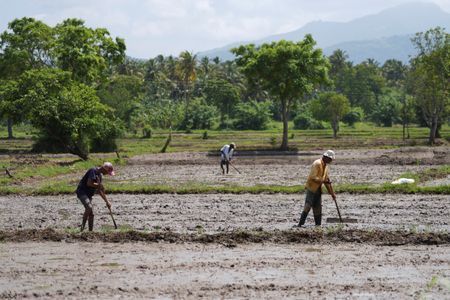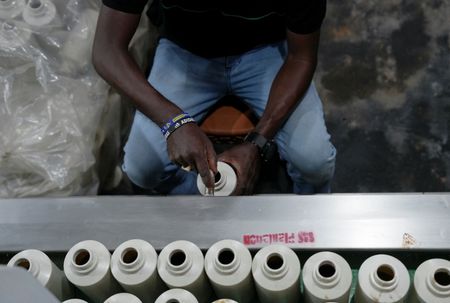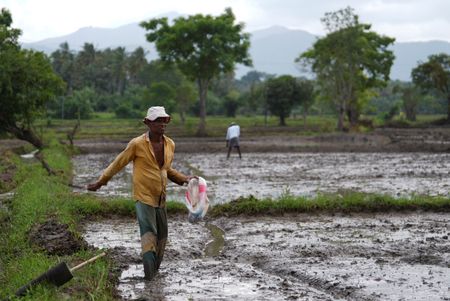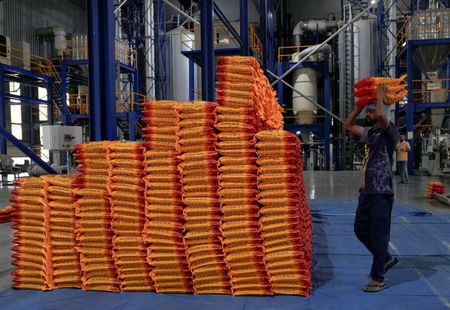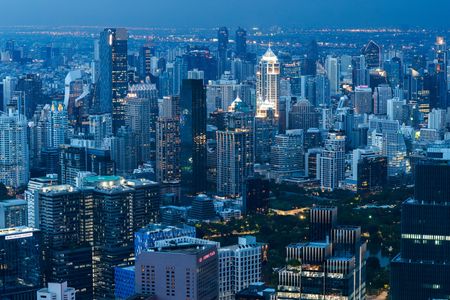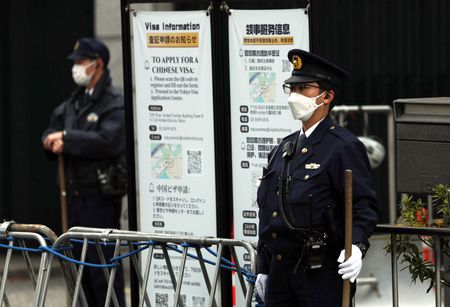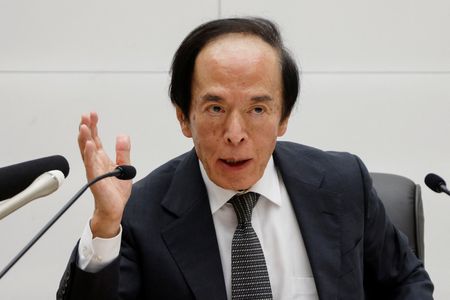By Uditha Jayasinghe
DEHIATTAKANDIYA, Sri Lanka (Reuters) -Four years since Sri Lanka scrapped a rash fertiliser ban that triggered protests, decimated harvests and exacerbated its financial collapse, the pain for growers lingers.
K.K.G. Thilakabandara, a rice farmer, still recalls the shock of the April 2021 ban.
“The ban was implemented without any consultations or giving any time for us to prepare,” Thilakabandara said, sitting on the veranda of his home in eastern Sri Lanka, one of the country’s main rice-growing regions.
“Farmers couldn’t get a good harvest from just organic material and they became desperate,” said Thilakabandara, who is also the chairman of Sri Lanka’s largest rice farming association.
While the ban was lifted in about seven months, fertilisers were scarce at first and now, while available, cost about three times more, according to official data and 11 farmers interviewed by Reuters.
Combined with rising prices for rice paddy seedlings and labour, this has forced many to take loans, leaving farmers struggling even as they try to rebuild.
Rice is the country’s biggest crop and staple food for its 22 million people.
Most farmers in Sri Lanka earn about 100,000 rupees ($326) as profit from a four-month rice crop cycle and then stretch the meagre income over the rest of the year, said farmer A.G. Jayasinghe, 73.
“That is too little and most people have now become part-time farmers,” he added.
COSTLY REVERSAL
But Sri Lanka is pushing to change that.
To ensure food supplies, it plans to expand rice cultivation to more than 800,000 hectares in the current season to February from 770,240 hectares in 2021, official data show. The island has almost fully reverted to inorganic farming.
Farmers now apply 250–300 kg of fertiliser per hectare of rice paddy, versus an average of 157 kg in some other South Asian countries, according to World Bank data.
The country’s chemical fertiliser purchases surged 73% in the first nine months of 2025 to 727,000 metric tons, official data show, exceeding annual pre-ban levels of 532,000 tons.
But the reversal has been expensive: the government spent about $202 million on chemical fertiliser imports this year, up more than 60% from a year earlier.
Domestic organic fertiliser startups have also been hit.
More than 100 startups had invested $83 million in the sector amid the organic push, but only eight remain, including S.A.S. Plantations, whose fish-based liquid fertiliser output has plunged from 300,000 bottles per season to about 20,000.
‘BARELY ENOUGH TO LIVE ON’
The island nation, which consumes 3 million metric tons of rice annually, expects to produce around 2.8 million tons in the season to February, versus 2.74 million tons last season.
But that will still fall short of pre-ban highs of 3 million metric tons, underscoring the impact of the abrupt fertiliser ban imposed in 2021 by then-president Gotabaya Rajapaksa.
The move was aimed at making Sri Lanka the world’s first fully organic farming nation. Instead rice output plunged and food inflation soared, deepening Sri Lanka’s worst financial meltdown in more than seven decades. Public anger culminated in a mass uprising that ultimately ousted Rajapaksa.
At the height of the 2022 crisis, Sri Lanka imported 783,420 tons of rice, mostly from top exporter India, worth $292.5 million, its first large-scale imports in decades.
While imports have come down from those highs, they have recently been creeping up, to 167,000 tons in the first 10 months of 2025 as bad weather cut yields, from 29,606 tons in 2023.
“The switch to organic fertiliser was a huge mistake … and even now our income is barely enough to live on,” Jayasinghe said. Standing under a tree with a group of farmers as a tractor ploughed his paddy field, he added: “Right now we are doing this more out of habit than for profit.”
($1 = 306.7500 Sri Lankan rupees)
(Reporting by Uditha Jayasinghe; Editing by Mayank Bhardwaj and Himani Sarkar)

